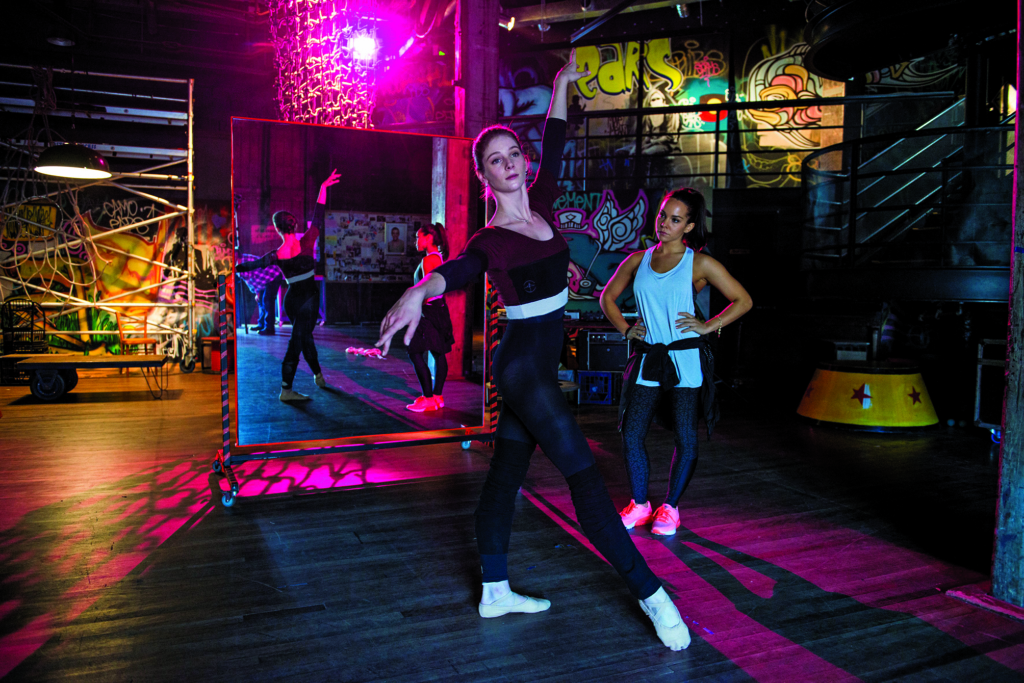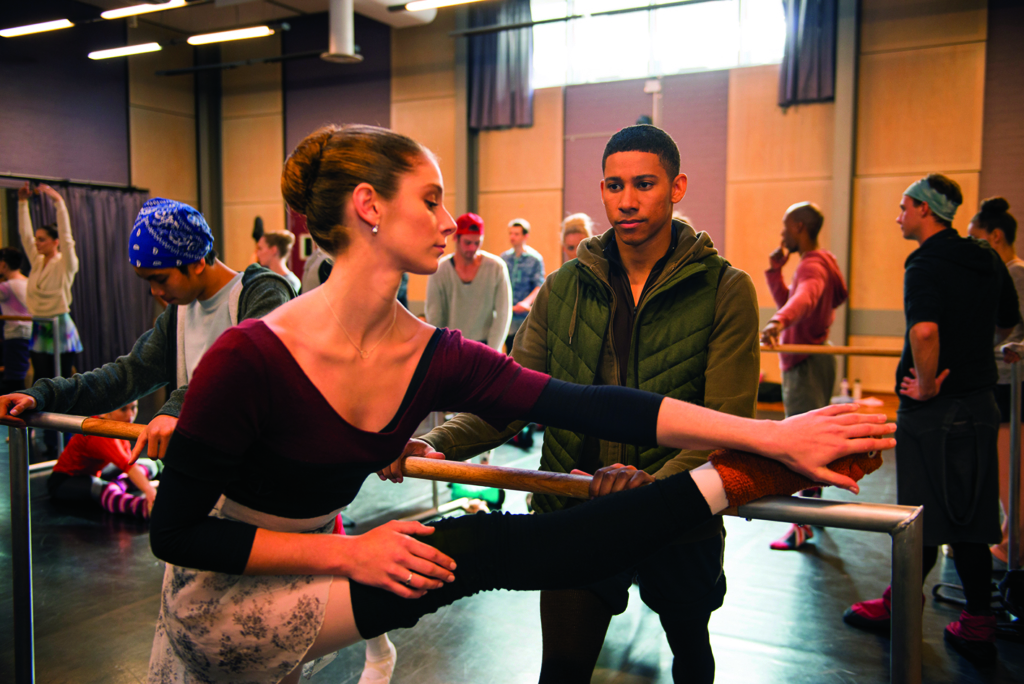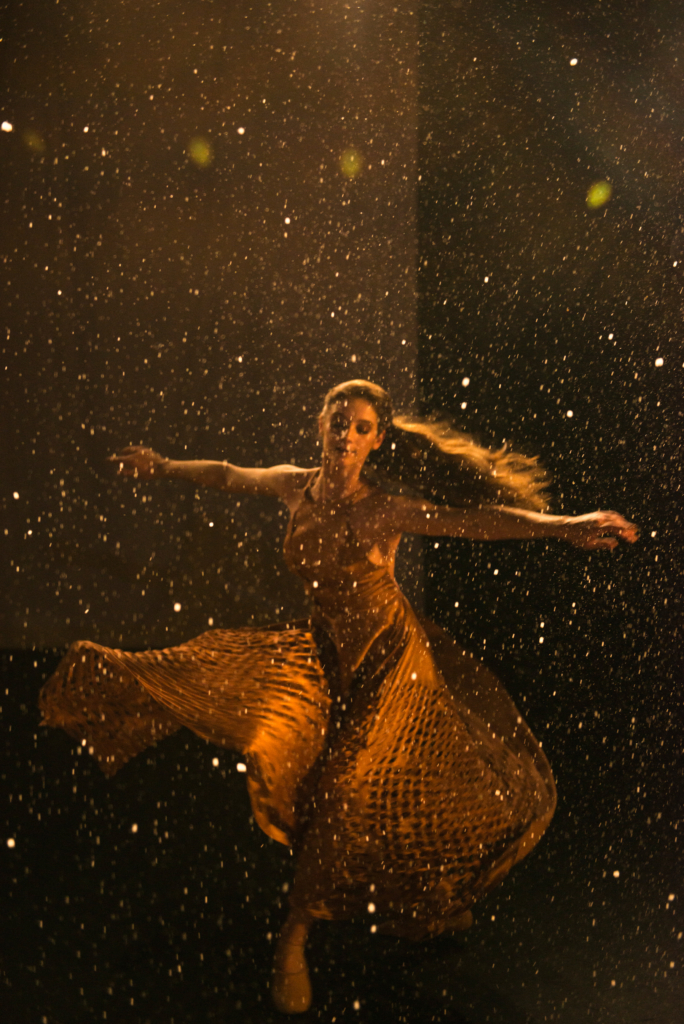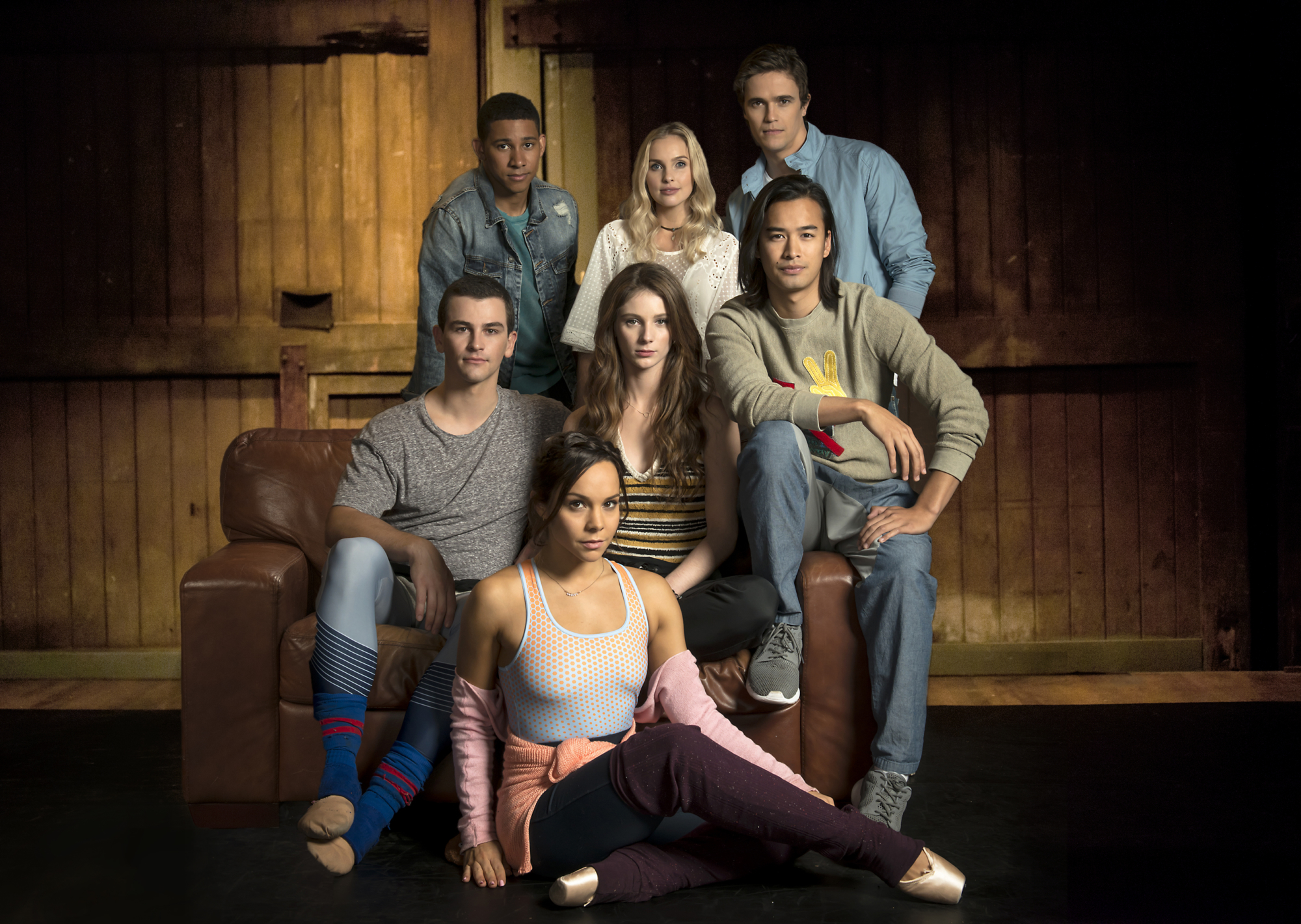Dance Academy, which ran for three seasons on the ABC from 2010 to 2013, is one of Australia’s most successful cultural exports in recent years. The television series, produced by Werner Film Productions, has aired in around 180 territories,[1]Matt Bungard, ‘Dance Academy’s Reunion on Big Screen a “Dream Come True” Behind the Scenes’, The Sydney Morning Herald, 2 April 2017, <http://www.smh.com.au/entertainment/movies/dance-academys-reunion-on-big-screen-a-dream-come-true-behind-the-scenes-20170326-gv6v4k.html>, accessed 31 July 2017. attracted a substantial fan base worldwide, and received both local and international critical acclaim. Thanks to this success, Dance Academy has made the rare leap onto the big screen: released in Australia in April this year, Dance Academy: The Movie (Jeffrey Walker) stands as the storyline’s epic conclusion, tying up the loose ends left by the series. The feature is also a test of the show’s enduring global appeal, as well as of its lasting impact on Australia’s screen industries.
The series follows ambitious young dancer Tara Webster (Xenia Goodwin) after she lands a place at the prestigious National Academy of Dance. Leaving her rural home for the sparkle of Sydney, Tara quickly cements her place as one of the academy’s most promising dancers. In the finale of the show’s third and final season, however, she slips during her audition for the National Ballet Company and breaks her back; the lucrative contract that had been a lifelong goal thus slips out of her grasp as well. Tara’s career is left in limbo as she is forced to withdraw from dancing to recover from her injury. The film picks up eighteen months later as the other characters are settling into their new adult lives – as professional dancers, actors and teachers. Tara, meanwhile, is taking writing classes and working as a waitress while pursuing a negligence lawsuit against the National Ballet Company for the lifetime of lost earnings caused by her injury. There is a catch, though: in order to claim the millions of dollars’ worth of compensation, she must also accept that she will never dance professionally. Without the ambition that has driven her all her life, she becomes lost. Unable to let go of the dream she’s had since she was a child, Tara leaves her whole life – and the lawsuit – behind and travels to New York to try one more time to make it as a dancer.

The Dance Academy franchise is inspired heavily by the life of co-creator and writer Samantha Strauss, who herself trained as a dancer before breaking her back at eighteen (forcing her to reassess her own priorities and, ultimately, pursue a career in screenwriting).[2]Jade Macmillan, ‘Dance Academy Writer Samantha Strauss Says Creating Children’s TV Isn’t All Fun and Games’, ABC News, 26 March 2017, <http://www.abc.net.au/news/2017-03-26/dance-academy-writer-talks-about-creating-kids-tv/8387572>, accessed 31 July 2017. Drawing on these experiences, the film offers a nuanced discussion of what it is like to re-evaluate your dreams as the real world and adulthood close in. Tara’s journey takes her to New York and Texas, where she reunites with her former classmates and pushes her relationships and body to the limit. Among other things, Dance Academy: The Movie questions the physical pain at the heart of professional dance and the intense pressures pervading the surrounding culture. As critic Stephen Romei wrote following the film’s local release: ‘I don’t think I’ve seen a dance film that made me realise how hard it is. And that’s just the physical side. The emotional stress is also there’.[3]Stephen Romei, ‘Dance Academy: The Movie Earns Its Place at the Barre’, The Australian, 15 April 2017, <http://www.theaustralian.com.au/arts/review/dance-academy-the-movie-earns-its-place-at-the-barre/news-story/cfa647e840ce679e8cee5a8ded83fdfd>, accessed 31 July 2017.
Moreover, the film portrays the complex and often-difficult relationships between its young-adult protagonists with nuance and empathy as they grapple with jealousy, betrayal and heartbreak. Dance Academy has always been remarkable for the respect it has for its teenage audiences, navigating difficult issues – from self-esteem and sexuality, to relationships and mental health – with honesty and humour. Whereas other teen dramas’ depictions of these issues can often feel preachy – adults lecturing children – Dance Academy’s treatment feels genuine. It is important to note that the film, like the show before it, speaks directly to its teenage audience; this is an honest and heartfelt coming-of-age story – well-written, beautifully directed and slickly produced. Indeed, in a crowded marketplace of dance movies, Dance Academy: The Movie takes its place with poise. Upon its release in Australia, critics universally praised it – at the time of writing, the film has a 100 per cent ‘Certified Fresh’ rating on Rotten Tomatoes.[4]‘Dance Academy: The Movie (2017)’, Rotten Tomatoes, <https://www.rottentomatoes.com/m/dance_academy_the_movie/>, accessed 31 July 2017. Romei even described the film as ‘better than La La Land [Damien Chazelle, 2016]’.[5]Romei, op. cit. As a standalone work, Dance Academy: The Movie is already a strong piece of cinema – but the fact that it builds on the commended TV series that came before it amplifies its success.

The Dance Academy TV series ran for sixty-five episodes, charting Tara’s rise from underdog to up-and-coming star. The show won and was nominated for a host of awards, including multiple Logies and two Hugo Television Awards for Best Children’s Series; both its writing and direction also scored gongs, and it was the only Australian television program to be nominated for an International Emmy in 2011. As it began being syndicated globally, the show started receiving attention in international publications as well – Manhattan Digest’s David Baxter, for instance, described it as ‘refreshing, well done, and inspiring’,[6]David Baxter, ‘Why You Should Be Watching Dance Academy’, Manhattan Digest, 18 July 2013, <http://www.manhattandigest.com/2013/07/18/why-you-should-be-watching-dance-academy/>, accessed 31 July 2017. while The Cut’s Elissa Bassist wrote about bingewatching the series on American Netflix: ‘In the next seven days, I would watch 52 episodes of Dance Academy.’[7]Elissa Bassist, ‘Addicted to Netflix: Teen-soap-opera Binge as Psychosis’, The Cut, 27 February 2013, <https://www.thecut.com/2013/02/addicted-to-netflix-teen-tv-binge-as-psychosis.html>, accessed 31 July 2017. In an interview with the ABC, Strauss remarked on the incredible reach the show has had: ‘We get fan mail from the strangest of places, Easter Island and Aruba and South Korea – it’s fantastic how kids TV can travel like that.’[8]Samantha Strauss, quoted in Macmillan, op. cit. Under every post on Dance Academy’s official Facebook page (which has over 300,000 likes) an international fan asks when they can expect to see the movie distributed in Brazil, Portugal, the UK, the US, Peru. One post includes a photo of two American fans who flew to Australia together just to see the film.
The show also launched the careers of several of its young stars, with some travelling to the US for auditions after the series wrapped and securing major roles; indeed, Los Angeles–based culture outlet The Wrap credits Dance Academy with instigating a ‘new Australian invasion’ of talent in the US.[9]Linda Ge, ‘Inside Hollywood’s New Australian Invasion: Dance Academy Alums Land Season’s Buzziest Roles’, The Wrap, 21 August 2015, <http://www.thewrap.com/inside-hollywoods-new-australian-invasion-dance-academy-alums-land-seasons-buzziest-roles/>, accessed 31 July 2017. Keiynan Lonsdale, who plays Ollie, has appeared in the second and third instalments of the blockbuster Divergent franchise (Robert Schwentke, 2015 & 2016) and is a recurring character in superhero TV series The Flash. Dena Kaplan, cast as Abigail, tours internationally as a DJ, producer and singer. And Jordan Rodrigues, who plays Christian, is a regular cast member on American family drama The Fosters. Given these actors’ now-illustrious careers, it is remarkable that so many of the original cast members have returned for the feature film.

Dance Academy: The Movie was made possible, in part, thanks to the show’s success internationally. With especially strong viewership numbers in the US through Netflix and a global fan base that is continuing to grow, the film had no trouble securing financial support from a number of funding bodies, including Screen Australia, Film Victoria, Screen NSW and the Australian Children’s Television Foundation, as well as a worldwide distribution contract with German company ZDF Enterprises. Interestingly, Dance Academy: The Movie’s budget is high by Australian screen-industry standards – production cost somewhere ‘in the [A]$5–10 million range’,[10]‘Joanna Werner Preps ABC TV-movie to Shoot in July, Dance Academy Release’, IF.com.au, 24 March 2017, <http://if.com.au/2017/03/23/article/Joanna-Werner-preps-ABC-TV-movie-to-shoot-in-July-Dance-Academy-release/VZSMCHYBAP.html>, accessed 31 July 2017. which likely places its budget among the top 24 per cent of local productions.[11]Screen Australia, ‘Feature Film Budget Ranges: Proportions of Films in Various Budget Ranges (2016 Dollars), 1990/91–2015/16’, <https://www.screenaustralia.gov.au/fact-finders/production-trends/feature-production/all-feature-films/budget-ranges>, accessed 31 July 2017. Shooting took place in both Sydney and New York, including multiple days at high-profile locations such as Times Square and Central Park. According to the cast and crew, the main difference between the series and the film was the length and depth of production: whereas making a television series felt rushed, working on the film was leisurely.[12]See, for example, Travis Johnson, ‘Dancing with the Stars: Alicia Banit, Thomas Lacey, and Dena Kaplan Talk Dance Academy’, FilmInk, 31 March 2017, <https://filmink.com.au/dancing-stars-alicia-banit-thomas-lacey-dena-kaplan-talk-dance-academy-movie/>; and Matthew Toomey, ‘Interview – Director Jeffrey Walker on Bringing Back Dance Academy’, The Film Pie, 24 March 2017, <http://www.thefilmpie.com/index.php/blog-2/4065-interview-director-jeffrey-walker-on-bringing-back-dance-academy>, both accessed 31 July 2017. Certainly, the end product is glossy and expertly produced, with long dance sequences and epic backdrops.
The first third of the movie centres on the Opera House, where Tara – working as a waitress – ferries canapés, and on the academy’s hip-hop studio, where her boyfriend, Christian, teaches classes for disadvantaged youth. The academy itself sits on one of the wharves over Sydney Harbour, a glistening stretch of water separating it from the Opera House. Christian lives above the studio, creating a plausible excuse for a young person to have a waterside apartment in present-day Sydney. Tara catches a taxi to the airport under the shadow of the Sydney Harbour Bridge, the iconic structure looming over her goodbyes with Christian. There is a logic to this setting for local audiences: several of Australia’s real-world dance companies are based in that area, and the Opera House hosts many of their productions. But the location also serves as a beacon for international audiences. The setting – decided on partly at the request of distributor ZDF – is a calculated one; speaking about the show’s location, producer and executive producer Joanna Werner explains: ‘We decided to […] have the Harbor [sic] Bridge and Opera House in shot as much as possible. We centered [it] in the most picturesque parts of Sydney.’[13]Joanna Werner, quoted in Anna Potter, Creativity, Culture and Commerce: Producing Australian Children’s Television with Public Value, Intellect, Bristol & Chicago, 2015, p. 155. This context functions as a de facto advertisement for Australia, depicting Sydney as a postcard. While the majority of Dance Academy: The Movie is set in the US, the film still feels deeply tied to its Australian roots, particularly through the visual bookends created by these shots of Sydney.

In light of all of this, and given the recent boom of Australian films that have been international hits – including Max Max: Fury Road (George Miller, 2015) and Lion (Garth Davis, 2016) – it is surprising that Dance Academy: The Movie has, at the time of writing, only been rolled out in Australian theatres. Although the official Dance Academy Facebook page assures fans almost daily that details regarding global distribution are upcoming, this remains in limbo. Locally, the film’s trajectory has been anticlimactic – to date, it has made just over US$1.5 million from its mainstream theatrical releases in Australia and New Zealand,[14]‘Dance Academy: The Movie’, Box Office Mojo, <http://www.boxofficemojo.com/movies/intl/?id=_fDANCEACADEMYTHEM01>, accessed 31 July 2017. and the profitability of its home-entertainment and digital sales, launched in July, still remains to be seen.
Like its television predecessor, the film has positioned honest, genuine characters against the larger-than-life backdrops of Sydney Harbour and surrounds, tackling heavy topics of relevance to its teen audience with bravery and candour. Although the film has stumbled at its final audition – initial box-office figures suggest it is set to be anything but a blockbuster – we can hold out hope that, with an eventual international release, Dance Academy: The Movie may yet find success in unlikely places, just as Tara does in the film. Regardless, Dance Academy has written a strong chapter into the history of Australian cultural exports, and local audiences should be proud to see this franchise represent them on the world stage.
Endnotes
| 1 | Matt Bungard, ‘Dance Academy’s Reunion on Big Screen a “Dream Come True” Behind the Scenes’, The Sydney Morning Herald, 2 April 2017, <http://www.smh.com.au/entertainment/movies/dance-academys-reunion-on-big-screen-a-dream-come-true-behind-the-scenes-20170326-gv6v4k.html>, accessed 31 July 2017. |
|---|---|
| 2 | Jade Macmillan, ‘Dance Academy Writer Samantha Strauss Says Creating Children’s TV Isn’t All Fun and Games’, ABC News, 26 March 2017, <http://www.abc.net.au/news/2017-03-26/dance-academy-writer-talks-about-creating-kids-tv/8387572>, accessed 31 July 2017. |
| 3 | Stephen Romei, ‘Dance Academy: The Movie Earns Its Place at the Barre’, The Australian, 15 April 2017, <http://www.theaustralian.com.au/arts/review/dance-academy-the-movie-earns-its-place-at-the-barre/news-story/cfa647e840ce679e8cee5a8ded83fdfd>, accessed 31 July 2017. |
| 4 | ‘Dance Academy: The Movie (2017)’, Rotten Tomatoes, <https://www.rottentomatoes.com/m/dance_academy_the_movie/>, accessed 31 July 2017. |
| 5 | Romei, op. cit. |
| 6 | David Baxter, ‘Why You Should Be Watching Dance Academy’, Manhattan Digest, 18 July 2013, <http://www.manhattandigest.com/2013/07/18/why-you-should-be-watching-dance-academy/>, accessed 31 July 2017. |
| 7 | Elissa Bassist, ‘Addicted to Netflix: Teen-soap-opera Binge as Psychosis’, The Cut, 27 February 2013, <https://www.thecut.com/2013/02/addicted-to-netflix-teen-tv-binge-as-psychosis.html>, accessed 31 July 2017. |
| 8 | Samantha Strauss, quoted in Macmillan, op. cit. |
| 9 | Linda Ge, ‘Inside Hollywood’s New Australian Invasion: Dance Academy Alums Land Season’s Buzziest Roles’, The Wrap, 21 August 2015, <http://www.thewrap.com/inside-hollywoods-new-australian-invasion-dance-academy-alums-land-seasons-buzziest-roles/>, accessed 31 July 2017. |
| 10 | ‘Joanna Werner Preps ABC TV-movie to Shoot in July, Dance Academy Release’, IF.com.au, 24 March 2017, <http://if.com.au/2017/03/23/article/Joanna-Werner-preps-ABC-TV-movie-to-shoot-in-July-Dance-Academy-release/VZSMCHYBAP.html>, accessed 31 July 2017. |
| 11 | Screen Australia, ‘Feature Film Budget Ranges: Proportions of Films in Various Budget Ranges (2016 Dollars), 1990/91–2015/16’, <https://www.screenaustralia.gov.au/fact-finders/production-trends/feature-production/all-feature-films/budget-ranges>, accessed 31 July 2017. |
| 12 | See, for example, Travis Johnson, ‘Dancing with the Stars: Alicia Banit, Thomas Lacey, and Dena Kaplan Talk Dance Academy’, FilmInk, 31 March 2017, <https://filmink.com.au/dancing-stars-alicia-banit-thomas-lacey-dena-kaplan-talk-dance-academy-movie/>; and Matthew Toomey, ‘Interview – Director Jeffrey Walker on Bringing Back Dance Academy’, The Film Pie, 24 March 2017, <http://www.thefilmpie.com/index.php/blog-2/4065-interview-director-jeffrey-walker-on-bringing-back-dance-academy>, both accessed 31 July 2017. |
| 13 | Joanna Werner, quoted in Anna Potter, Creativity, Culture and Commerce: Producing Australian Children’s Television with Public Value, Intellect, Bristol & Chicago, 2015, p. 155. |
| 14 | ‘Dance Academy: The Movie’, Box Office Mojo, <http://www.boxofficemojo.com/movies/intl/?id=_fDANCEACADEMYTHEM01>, accessed 31 July 2017. |





